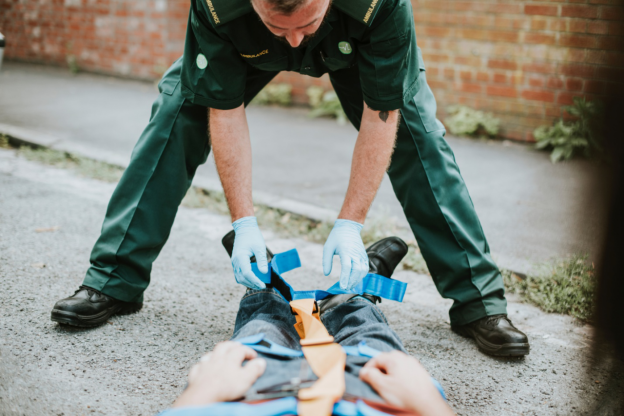No matter how many safety precautions you take accidents are bound to happen. One day, you may be chatting away with your colleague when they suddenly begin to sweat profusely and collapse on the floor. What do you do?
36% of Canadian households have no first aid training. In this blog, we’re going to talk about the steps that are required if you find yourself in a medical emergency.
Be Prepared
Even before an emergency occurs, you can be prepared to tackle one.
Wherever you go, always have an idea of the nearest hospital or ambulance center and the quickest routes available. This will ensure that during an emergency, you don’t have to open your phone navigation to drive someone who’s having a cardiac arrest.
Smartphones have the feature of SOS emergency services. During an emergency a simple button shortcut will alert your emergency contacts about your location. One of these contacts should be the emergency services number; 911 or 112 in Canada. Others can be your closest friends who live nearby or can alert the authorities themselves.
Phones also have the option of saving your medical information, your family doctor, your blood type and other vital information. This is sent along with the SOS alert and can help save the authorities’ valuable time.
Keep Your ‘Cool’
When you face an emergency, your body’s automatic response is to flood your veins with the stress hormone, cortisol. Cortisol signals the body’s alarm system. When it reaches the brain, it slows down the prefrontal cortex, which is responsible for critical thinking and decision making.
It’s crucial that you override your body’s natural response and think rationally. If you catch yourself getting confused, take a deep breath. Look around you and tell yourself that you’re capable of handling the situation.
Recognizing an Emergency
If someone gets a small cut or bruise, it obviously doesn’t warrant emergency medical attention. But for people without first aid training, it can be difficult to decide whether to call the authorities or not.
If someone is showing any of these symptoms, it qualifies for a medical emergency;
- Burns
- Uncontrolled bleeding
- Stroke
- Seizure
- Severe or persistent vomiting/diarrhea
- Head injury
- Poisoning
- Chest problems
- Sudden change in mental state (harm to themselves or others)
- Choking
- Unusual abdominal pain
It’s impossible to cover each symptom that can be a cause for emergency. Some of them are common sense and don’t require a second thought. But if you find the situation confusing and are unsure of what to do, it’s best to call the authorities anyway and let the professionals guide you.
Assess the Patient’s Health
If there’s not much you can do, it’s okay to accept that. Clear the area to avoid congestion and wait for the authorities calmly.
To aid medical services you can inquire about the patient’s health. Ask them questions to check if they’re conscious and lucid. “What is your name?” or “Where are you?” can help you gain information that would be vital for medical services.
If the patient is able to respond accurately, inquire further and ask about any medications they’re on and their medical history.
Take a First Aid Course
Being adequately prepared in a medical emergency can mean the difference between life and death. A first aid course will equip you with all the knowledge and skills you need to respond appropriately.
To enrol in a first aid training course, reach out to Metro Safety Training. We’re located in BC, Canada and offer comprehensive first aid courses, along with CPR training. Our students are provided with hands-on training and theoretical learning.
We also offer workplace safety courses to educate your employees about workplace hazards and how to mitigate their risks.
Contact us for more details.







